



February 13, 2018
by Vincent Hoare [View this Guide as a PDF]
I bought two "M-Audio Keystation 61" master keyboards (in France — I live in France) and removed the keyboards and controls from their plastic casing.


I cut the white keys of one of the keyboards as follows:
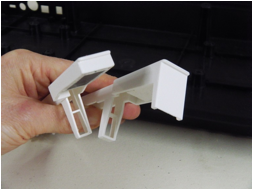
The original key is to the right. I had to cut it back to the metal weight inside to make it as shallow as possible.

I then assembled the keyboards in a new wooden casing or console.
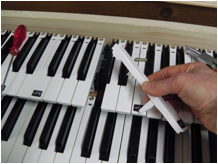
The black keys of the upper keyboard are concealed by a removable lid.

I fixed some of the controls to the right hand side and discarded the rest.
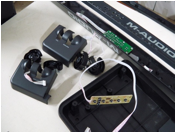
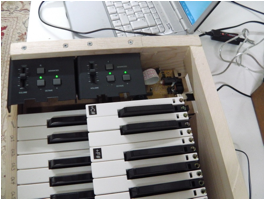
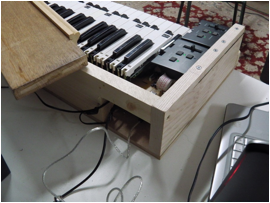
How I program the keyboards:
For playing the 19 note AlFarabi scale with Microsynth:
This scale consists of the 12ET scale (approximately) plus 7 microtonal notes.
My lower keyboard is set to default (12ET) tuning. The upper keyboard is retuned to provide the 7 microtonal notes of 19AlFarabi on its white keys, as follows:
In CSE I retune the white keys of the 12 ET scale to the 7 microtonal notes of 19AlFarabi as follows:
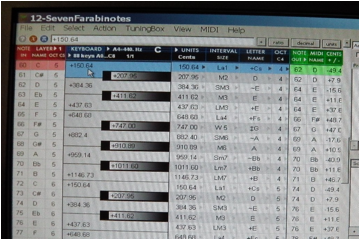
N.B. I have to retune the black keys as well, though I don't use them for playing, so that each one is tuned in a random way that lies above the preceding key and below the key that follows.
I name this new 12 note scale "12-sevenFarabinotes" (or "12-sevenArabnotes") and send it to microsynth.
In microsynth I have to map the new scale on to C# and raise it one octave.
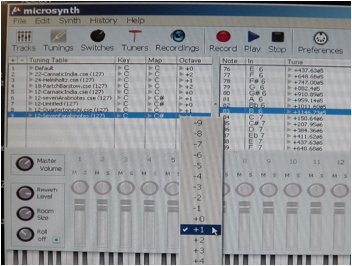
I name the upper keyboard "manual 1" and the lower keyboard "manual 2":

Although I've labelled all 7 microtonal notes of the central octave of the upper keyboard, I find that after a little practice all one needs to label, or mark in some way, are the +C# and +F# keys.
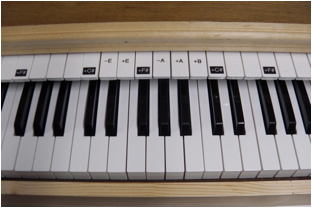
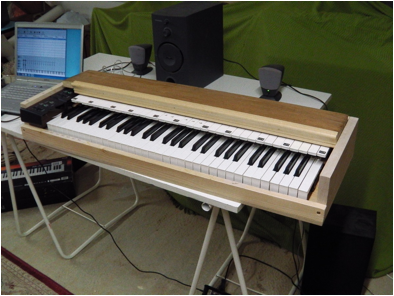
The 7 extra keys can of course be tuned in any way one likes.
With the lid removed the whole upper keyboard is available for tuning microtonal notes or for using simply as a second keyboard.
Why I use the 19 AlFarabi scale:
It contains a good balance of extra notes; give or take a few cents, it adds the following into our classic 12 note system: four quartertones ( +C#, +F#, +A and +B ), one sixth tone ( +E ) and two tenth tones ( -E and -A ). We need some quartertones added to our keyboards, but not too many, because if you want lots of quartertones, just retune a second keyboard a quartertone apart. The sixth tone between E and F is a thoroughly audible and welcome addition. As for the two tenth tones, although they are hardly audible, they add a very subtle difference to the keyboard, like a comma for a violinist; our standard keyboard lacks one or two notes like this.
7 microtonal notes is a good number, as it coincides nicely with the 7 white notes available on the standard keyboard.
I think that this scale, particularly played in this kind of keyboard setup, has a lot of musical potential; it allows more developed melodic expression, richer sounding clusters and new chord structures are there to be discovered.
When 2 standard keyboards are superimposed as closely as possible together, as seen in this instrument, the 7 white keys of the upper keyboard are easily reached by the hand.
I play this instrument in combination with a virtual organ; here's an example:
https://soundcloud.com/cwrh59/organ-oboe-piece
Vincent Hoare, 7 February 2018
[ Showing 1 entry | Previous entry | Next entry | Show all entries ]